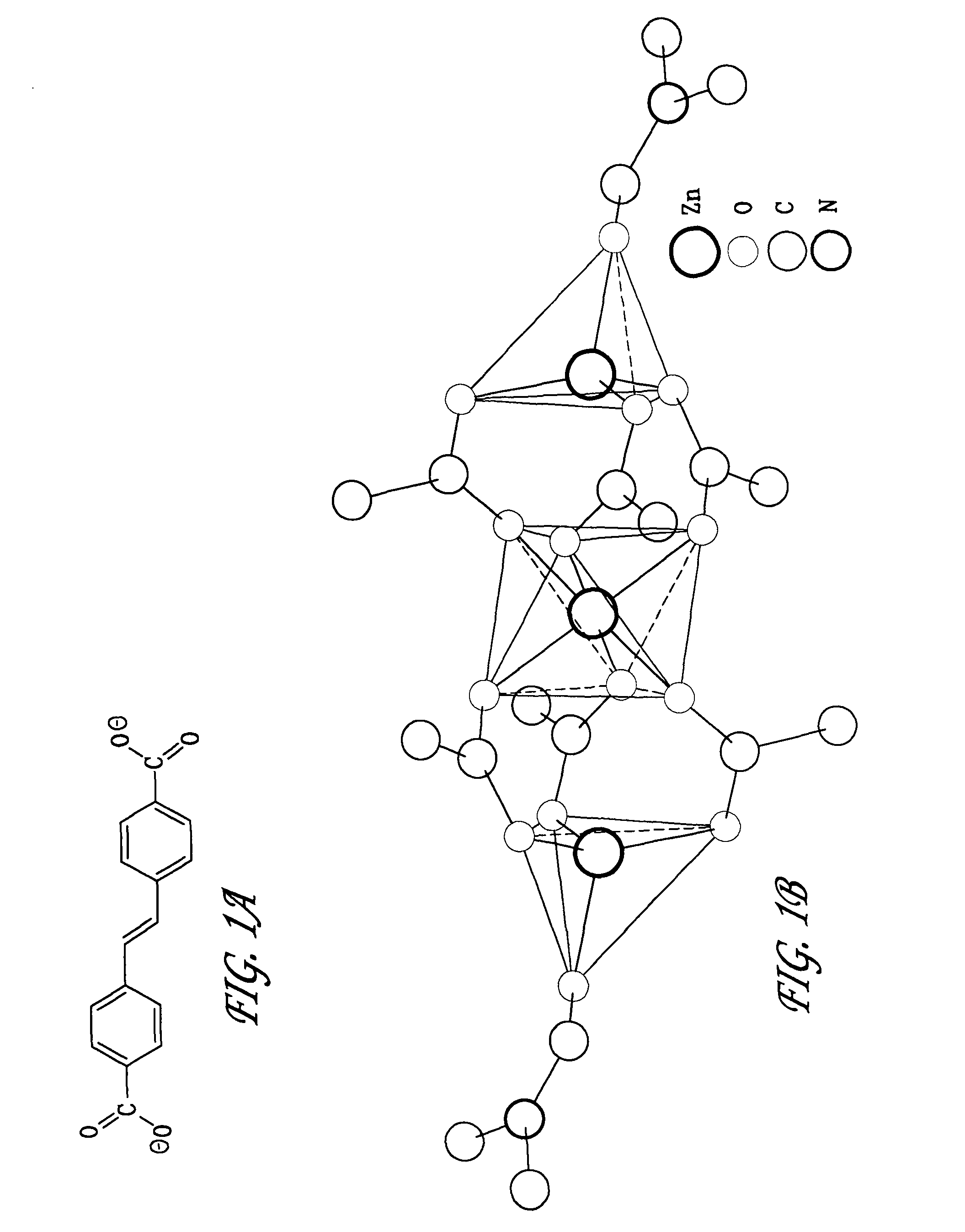Hybrid metal organic scintillator materials system and particle detector
a technology of metal organic scintillators and materials, applied in the direction of organic chemistry, polycrystalline material growth, crystal growth process, etc., can solve the problems of existing particle detection technologies, difficult to predict the geometry of molecular assemblies, scarce reports of luminescent mofs, etc., to enhance the properties of liquid scintillators and minimize the effect of plasma quenching effects
- Summary
- Abstract
- Description
- Claims
- Application Information
AI Technical Summary
Benefits of technology
Problems solved by technology
Method used
Image
Examples
example 1
[0063]A quantity of 71.3 mg of LH2 was added to 20 mL of DMF in a clean glass beaker and agitated until almost fully dissolved. To this was added 209.2 mg zinc nitrate hexahydrate (Zn(NO3)2.6H2O) giving a 3:1 mole ratio of metal to linker (while the hexahydrate was used in the present example, other forms of the hydrate may also be used). The beaker holding this solution was then sealed and placed in an oven at 75° C. for 16 hours, after which the temperature of the solution was increased to 85° C. and held for an additional 4 hours. Upon cooling, there resulted yellow, needle-like crystals, hereinafter referred to as crystal 1. The yield was 75.2 mg or 74% based on the linker.
[0064]These crystals were collected and washed three times with fresh DMF, three times with chloroform, dried at 90° C. in vacuo for 24 hours and then stored under ambient conditions. The chemical formula and structure of these crystals were determined to be Zn3L3(DMF)2 via crystallography and elemental analys...
example 2
[0067]A variation of the solvothermal synthesis of crystal 1 was prepared by substituting N,N-diethylformamide (DEF) for DMF as the solvent in the preparation of the to crystals and heating the mixture at 105° C. for 16 hrs to provide colorless, cube-like crystals hereinafter referred to as crystal 2.
[0068]In this example, 30.7 mg of LH2 was added to 20 mL DEF in a clean glass beaker and sonicated upon light heating to enable its suspension. 209.2 mg Zn(NO3)2.6H2O was added, giving a 6:1 mole ratio of metal to linker, and the beaker sealed (again, other hydrate contents are possible). This was then placed in an oven at 105° C. for 16 hours which yielded the transparent colorless crystals. The excess DEF was decanted while still hot and replaced by DMF. Crystals of 2 were washed with chloroform three times and stored in chloroform until ready for analysis. The calculated analysis for Zn4OL3(DMF)(CHCl3) is C 49.20%, H 3.03%, and N 1.10%; the present material was found to comprise C 49...
PUM
| Property | Measurement | Unit |
|---|---|---|
| pressures | aaaaa | aaaaa |
| wavelength | aaaaa | aaaaa |
| wavelength | aaaaa | aaaaa |
Abstract
Description
Claims
Application Information
 Login to View More
Login to View More - R&D
- Intellectual Property
- Life Sciences
- Materials
- Tech Scout
- Unparalleled Data Quality
- Higher Quality Content
- 60% Fewer Hallucinations
Browse by: Latest US Patents, China's latest patents, Technical Efficacy Thesaurus, Application Domain, Technology Topic, Popular Technical Reports.
© 2025 PatSnap. All rights reserved.Legal|Privacy policy|Modern Slavery Act Transparency Statement|Sitemap|About US| Contact US: help@patsnap.com



